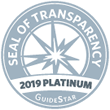The treatment of hyperthyroidism is described in detail in the Hyperthyroidism brochure.
Some, but not all patients with a toxic nodule will require antithyroid medication to control their hyperthyroidism, and possibly a beta blocker to control hyperthyroid symptoms such as a fast heart rate. Using these medications depends on the symptoms of hyperthyroidism and risk of developing bone and/ or heart problems related to the hyperthyroidism. While medication works to control the production of thyroid hormone, it does not fix the underlying toxic nodule. If the medication is discontinued, the hyperthyroidism returns. Because staying on antithyroid medication carries some risks, definitive management is usually suggested to cure the toxic nodule. The antithyroid medication and a beta blocker may also be used in preparation for a definitive treatment.
DEFINITIVE MANAGEMENT INCLUDES SURGERY OR RADIOACTIVE IODINE.
Surgery for a toxic nodule typically involves removal of the entire side of the thyroid that contains the nodule. The remaining thyroid on the other side can provide adequate amounts of thyroid hormone in most patients after this surgery, but some people do need to take thyroid hormone supplementation following removal of half of their thyroid. Surgery for toxic multinodular goiter typically involves removal of the entire thyroid, especially if nodules are present on both sides of the thyroid or the thyroid is enlarged and causing pressure in the neck or difficulty with swallowing. Removal of the entire thyroid gland requires taking a thyroid hormone pill every day following surgery.
In either case, if surgery is selected as the treatment, a surgeon with expertise in thyroid surgery should be chosen to minimize the risk of complications.
Radioactive iodine can be used to cure the hyperthyroidism from a toxic nodule or toxic multinodular goiter. For toxic multinodular goiter, the size of the thyroid is important. An enlarged toxic multinodular goiter may not be successfully treated with just one dose of radioactive iodine, and a second course of treatment may be required. The remaining thyroid typically provides adequate amounts of thyroid hormone in most patients after radioactive iodine, but some patients may need to take a thyroid hormone pill following treatment.
The nodules themselves often shrink but usually still remain, unlike after surgery. Depending on how much the nodule shrinks, it may require continued surveillance and monitoring after the iodine treatment, and ultimately may need to be removed for other reasons, such as a concerning biopsy or large size that causes neck pressure.
It is important to remember that other nodules in your thyroid that are not toxic may influence which treatment option is best. Fine needle aspiration biopsy may be necessary for some of these nodules.



